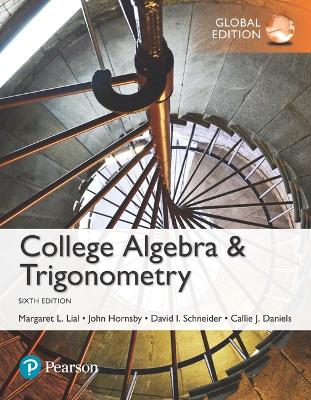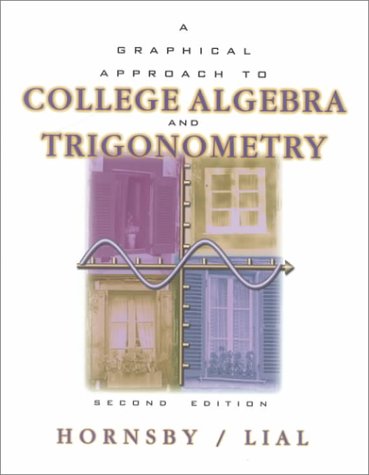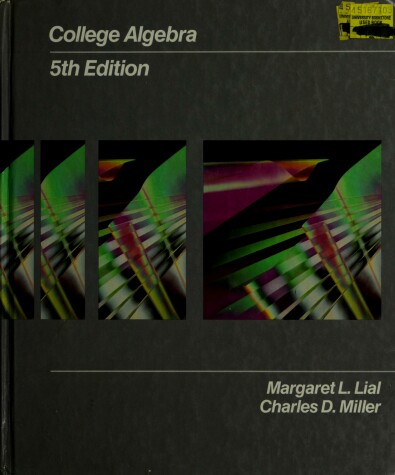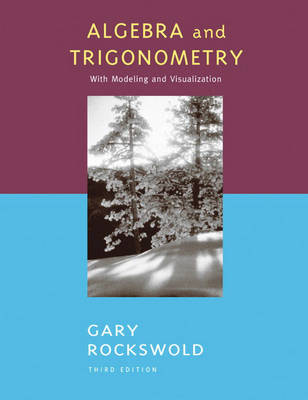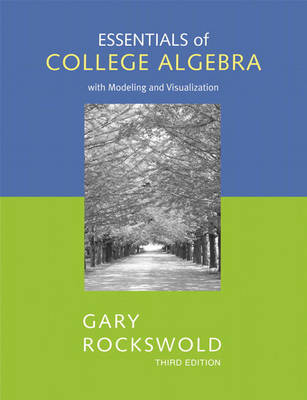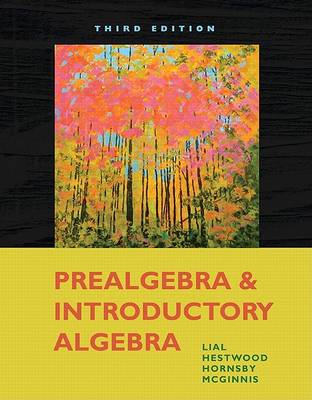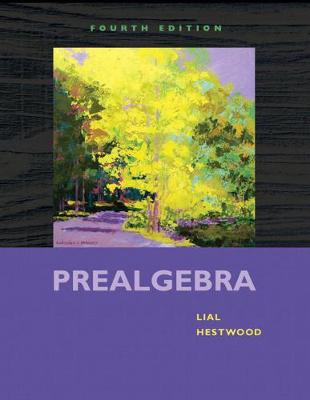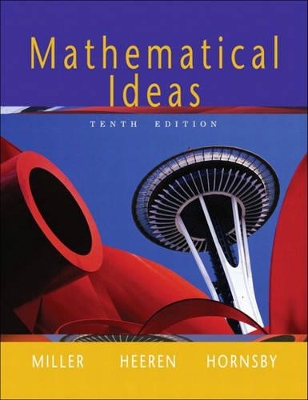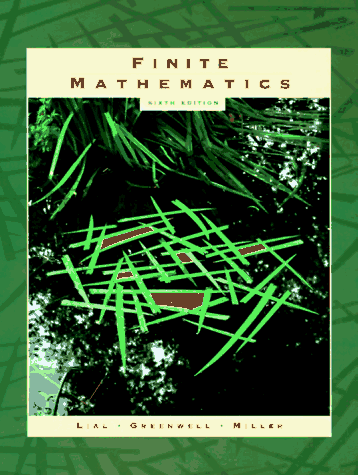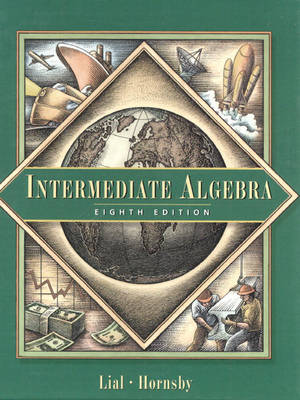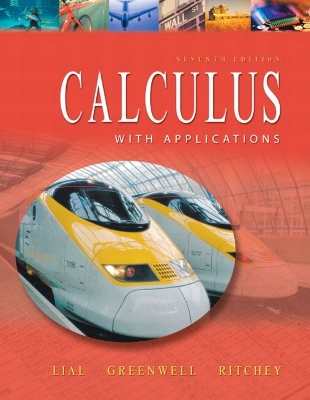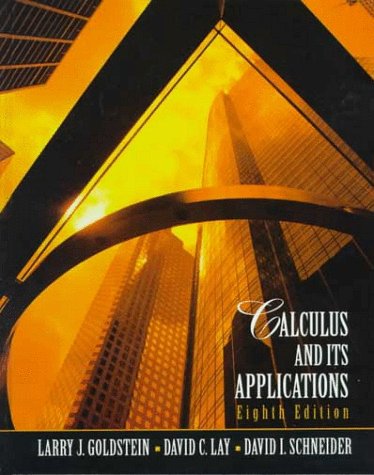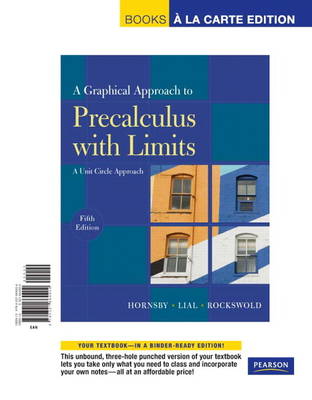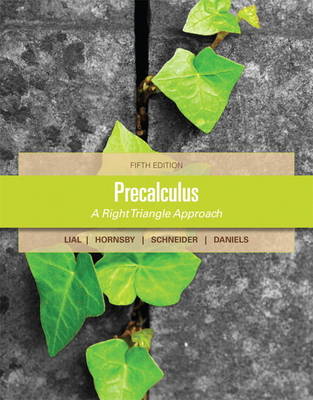Books a la Carte
35 total works
Brief Calculus and Its Applications
by Larry Goldstein, David Lay, and David Schneider
College Algebra and Trigonometry, Global Edition
by Margaret L Lial, John Hornsby, David I Schneider, and Callie Daniels
The College Algebra series, by Lial, Hornsby, Schneider, and Daniels, combines the experience of master teachers to help students develop both the conceptual understanding and the analytical skills necessary for success in mathematics. With this latest edition, the authors respond to the challenges of new student expectations and new classroom models.
Graphical Approach to College Algebra and Trigonometry
by John Hornsby and Margaret L Lial
- This book, intended for a college algebra and trigonomety course, is the culmination of many years of teaching experience with the graphing calculator. In it, the authors treat the standard topics of college algebra and trigonometry by solving analytically, confirming graphically, and motivating through applications.
- Throughout the first five chapters, the authors present the various classes of functions studied in a standard college algebra and trigonometry text. Chapter One introduces functions and relations, using the linear function as the basis for the presentation. In this chapter, the authors introduce the following approach which is used throughout the next four chapters: after introducing a class of functions, the nature of its graph is examined, then the analytic solution of equations based on that function is discussed. Students are then shown how to provide graphical support for solutions using a graphing calculator. Having established these two methods of solving equations, the authors move on to the analytic methods of solving the associated inequalities. Students then learn how the analytic solutions of these inequalities can also be supported graphically. Finally, once the student has a feel for the particular class of function under consideration, the authors use analytic and graphical methods to solve interesting applications involving that function.
- By consistently using this approach with all the different classes of functions, students become aware that the authors are always following the same general procedure, and just applying that procedure to a new kind of function. Throughout the text, the authors emphasize the power of technology but provide numerous warnings on its limitations: the authors stress that it is only through the understanding of mathematical concepts that students can fully appreciate the power of graphing calculators and use technology appropriately.
As part of their hallmark developmental math series, this revision of Beginning and Intermediate Algebra continues the time-tested Lial/Hornsby commitment to helping students succeed. Designed to accommodate instructors and students who wish to eliminate the topic overlap between separate beginning and intermediate algebra books, this successful text integrates the appropriate topics in one book and features a flexible Table of Contents that can be adapted for a variety of course structures. One up-to-date strategy that has been incorporated involves the early introduction of graphing lines in a rectangular coordinate system and functions. Consistent with current teaching practices, this organization also allows the integration of interesting applications featuring real world data in the form of ordered pairs, tables, bar and line graphs, and equations. Chapter 4 introduces ordered pairs, graphing, and slope with a gentle introduction to the function concept using input-output relationships. Chapter 8 reviews and then extends the work with linear equations in two variables begun in Chapter 4 and provides additional discussion of functions, including domain, range, and function notation. Also consistent with this approach, graphs of quadratic equations are included earlier in the text when quadratic equations are solved rather than with the material on conic sections as in the previous edition. For added flexibility, a new appendix that reviews exponents, polynomials, and factoring is also included.
If you choose not to cover graphing linear equations and functions earlier as the new edition suggests, you can defer Chapter 4 and combine it with Chapter 8 as in the previous edition. Material on graphing in Section 5.1 can easily be omitted. Applied problems in Chapters 5-7 that refer to the function concept can be used without actually working through Chapter 4.
The Lial/Miller developmental mathematics paperback series has helped thousands of students succeed in math. In keeping with its proven track record, this revision includes an enhanced art program, many new exercises, and three new features: Interpreting Technology, Numbers in the Real World, and Mathematical Connections. In addition, its comprehensive support package of materials and supplements has been fully revised and updated to support both students and instructors, including a "Real to Reel" video series and World Wide Web site (www.mathnotes.com), both new to this edition.
This book, intended for a graphing calculator optional college algebra course, offers students the content and tools they will need to successfully learn college algebra. The authors have addressed the needs of students who will continue their study of mathematics as well as those who are taking college algebra as their final mathematics course. Emphasis is placed on exploring mathematical concepts by using real data, current applications and optional technology.
The Lial series has helped thousands of students succeed in developmental mathematics through its friendly writing style, numerous realistic examples, extensive problem sets, and complete supplements package. In keeping with its proven track record, this revision includes a new open design, more exercises and applications, and additional features to help both students and instructors succeed.
Developmental Mathematics
by Terry McGinnis, Stanley A Salzman, John Hornsby, Margaret L Lial, and Diana L Hestwood
Lial's Developmental Mathematics gives students the tools necessary to succeed in developmental math courses and prepares them for future math courses and the rest of their lives. The Lial developmental team creates a pattern for success by emphasizing problem-solving skills, vocabulary comprehension, real-world applications, and strong exercise sets. In keeping with the proven Lial track record, this book offers an effective design with many exercises and applications to enhance comprehension of basic mathematics and algebra.
Gary Rockswold focuses on teaching algebra in context, answering the question, "Why am I learning this?" and ultimately motivating the students to succeed in this class. In addition, the author's understanding of what instructors need from a text (great 'real' examples and lots of exercises) makes this book fun and easy to teach from. Integrating this textbook into your course will be a worthwhile endeavor.
Essentials of College Algebra with Modeling and Visualization
by Gary K Rockswold
Today's algebra students want to know the why behind what they are learning and it is this that motivates them to succeed in the course. By focusing on algebra in a real-world context, Gary Rockswold gracefully and succinctly answers this need. As many topics taught in today's college algebra course aren't as crucial to students as they once were, Gary has developed this streamlined text, covering linear, quadratic, nonlinear, exponential, and logarithmic functions and systems of equations and inequalities, to get to the heart of what students need from this course. By answering the why and streamlining the how, Rockswold has created a text to serve today's students and help them to truly succeed.
Prealgebra and Introductory Algebra
by Margaret L Lial, Diana L Hestwood, John Hornsby, and Terry McGinnis
KEY TOPICS: Introduction to Algebra: Integers; Understanding Variables and Solving Equations; Solving Application Problems; Rational Numbers: Positive and Negative Fractions; Rational Numbers: Positive and Negative Decimals; Ratio, Proportion, and Line/Angle/Triangle Relationships; Percent; Measurement; Graphs; Exponents and Polynomials
MARKET: For all readers interested in prealgebra.
The tenth edition of Mathematical Ideas is the best ever! We have continued with the features and pedagogy that have made this book so successful over the years and at the same time, we've spent a considerable amount of time to incorporate fresh data, new photos, and new content (by way of a new chapter on trigonometry). We have tried to reflect the needs of our users-both long-time readers and those new to the Math Ideas way of teaching liberal arts math. We hope you'll be pleased with the results.
Like its predecessors, this edition has been designed with a variety of students in mind. It is well-suited for several courses, including the aforementioned liberal arts audience, survey courses in mathematics, and mathematics for prospective and in-service elementary and middle school teachers. Ample topics are included for a two-term course, yet the variety of topics and flexibility of sequence make the text suitable for shorter courses as well. Our main objectives continue to be to provide comprehensive coverage of topics, appropriate organization, clear exposition, an abundance of examples, and well-planned exercise sets with numerous applications.
Finite Mathematics
by Margaret L Lial, Raymond N. Greenwell, and Charles D. Miller
Widely known for incorporating interesting, relevant, realistic applications, this new edition offers many more real applications citing real data sources. It also allows for increased visualization and discovery through optional use of graphing calculators. A dedicated World Wide Web site rounds out the teaching and learning package, offering projects based on current events, and graphing calculator programs tied to the text.
Continuing their 30-year tradition of excellence, this revision of Lial/Hornsby Intermediate Algebra features the best possible text and supplements package using the most up-to-date strategies to help students succeed. One such strategy, evident in the new table of contents and consistent with current teaching practices, involves the early introduction of graphing lines in a rectangular coordinate system and functions. This organization provides students with increased exposure to basic graphing and function concepts, an integral part of later mathematics courses, throughout their study of intermediate algebra. It also allows the integration of interesting applications featuring real world data in the form of ordered pairs, tables, graphs, and equations. As a natural follow-up to the treatment of linear equations in Chapter 3, systems of linear equations are now presented in Chapter 4. Also consistent with this approach, graphs of quadratic equations are included earlier in the text when quadratic equations are solved rather than with the material on conic sections as in previous editions. The chapter on exponential and logarithmic functions appears earlier as well.
If you choose not to cover graphing linear equations and functions earlier as the new edition suggests, you can defer Chapters 3 and 4 and cover them later after either Chapter 6 or 7. Section 5.3 and the material on graphing and functions in Sections 6.1, 6.4, 6.6, and 7.5 can easily be delayed or omitted.
Calculus With Applications
by Margaret L Lial, Raymond N. Greenwell, and Nathan P. Ritchey
Calculus With Applications was written for the one- or two-semester applied calculus course for students majoring in a variety of fields-business, economics, social science, and biological and physical science. Widely known for incorporating interesting, relevant, and realistic applications, this new edition now offers many more real applications citing current data sources. The new edition now offers more opportunities for use of technology, allowing for increased visualization and a better understanding of difficult concepts. A dedicated Web site rounds out the teaching and learning package, offering extended applications from the book, skill mastery quizzes, and graphing calculator programs tied to the text.
Calculus and Its Applications
by Larry J Goldstein, David C Lay, and David I Schneider
This is the best-selling applied calculus text for the 4 year marketplace. More rigorous than Barnett, Goldstein/Lay/Schneider still provides an accessible text to students and instructor's alike. Integrating more usage of Excel and Optional Graphing calculator examples and exercises, this revision is sure to bring this classic to the classroom in an up-to-date approach. A full website with Excel sownloadable projects/tutuorials accompanies the text.
A Graphical Approach to Precalculus with Limits
by John S Hornsby, Margaret L Lial, and Gary K Rockswold
http://www.pearsonhighered.com/lialprecalculusinfo/

